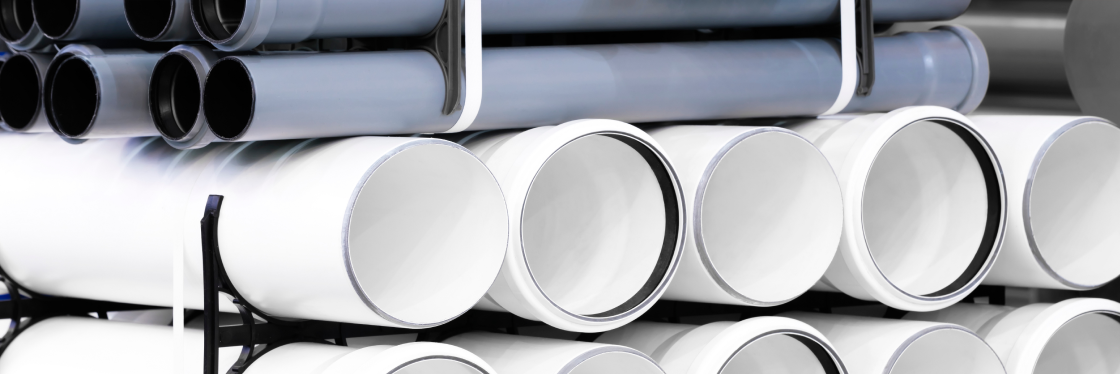PVC vs UPVC vs CPVC Pipes: Which One Should You Choose?
Table of Contents
- 1. What Are PVC, UPVC, and CPVC Pipes?
- 2. Key Differences at a Glance
- 3. PVC Pipes: Features, Uses & Benefits
- 4. UPVC Pipes: Features, Uses & Benefits
- 5. CPVC Pipes: Features, Uses & Benefits
- 6. Which Pipe Should You Choose?
- 7. Quick Comparison Table
- 8. Expert Tips for Choosing the Right Pipe
- 9. Conclusion & Call-to-Action
1. What Are PVC, UPVC, and CPVC Pipes?
PVC, UPVC, and CPVC are popular plastic pipes used for plumbing and drainage in homes. Although they look similar, each type serves different purposes and performs best in specific conditions.
2. Key Differences at a Glance
PVC (Polyvinyl Chloride): Standard plastic pipe for drainage and cold water
UPVC (Unplasticized PVC): Rigid, durable, safer for drinking water
CPVC (Chlorinated PVC): Extra-strong, withstands hot water
3. PVC Pipes: Features, Uses & Benefits
Features:
Made with plasticisers (additives for flexibility)
Lightweight and easy to cut or fit
Not suitable for hot water
Common Uses:
Home drainage pipes
Gardening and irrigation
Low-pressure plumbing
Benefits:
Affordable and widely available
Simple DIY installation
Corrosion-resistant
Drawbacks:
May become brittle with age
Not recommended for drinking water or hot water supply
4. UPVC Pipes: Features, Uses & Benefits
Features:
“Unplasticized”: No plasticisers, making them firm and rigid
Durable and long-lasting (up to 50 years or more)
Safe for potable water
Common Uses:
Drinking water supply lines
Swimming pools
Electrical conduits
Benefits:
Strong and impact-resistant
Highly resistant to chemicals and corrosion
Recyclable and eco-friendly
Drawbacks:
Not flexible; cannot bend easily
Not suitable for hot water (max 60°C)
5. CPVC Pipes: Features, Uses & Benefits
Features:
Chlorinated for extra strength and heat resistance
More flexible than UPVC
Can handle high temperatures (up to 93°C)
Common Uses:
Hot and cold water plumbing
Industrial piping
Fire sprinkler systems
Benefits:
Safe for both hot and cold potable water
Resistant to bacterial growth and scaling
Simple to join with solvent cement
Drawbacks:
Slightly higher cost
Less rigid than UPVC
6. Which Pipe Should You Choose?
Choose PVC if:
You need low-cost options for drainage or irrigation
Flexibility and quick installation matter
Choose UPVC if:
You need safe pipes for drinking water
Durability and a long lifespan are important
Choose CPVC if:
You need piping for hot water supply
You want a pipe suitable for both cold and hot water with hygiene
7. Quick Comparison Table
| Feature | PVC | UPVC | CPVC |
|---|---|---|---|
| Flexibility | Flexible | Rigid | More flexible than UPVC |
| Drinking Water Safe | Not recommended | Yes | Yes |
| Hot Water Use | No | No | Yes (up to 93°C) |
| Common Home Use | Drainage, Irrigation | Drinking water, Pool | Hot/cold water supply |
| Durability | Moderate | High | High |
| Cost | Low | Moderate | Slightly higher |
8. Expert Tips for Choosing the Right Pipe
Check the temperature: Use CPVC for hot water, UPVC for cold water.
Assess chemical resistance: Both UPVC and CPVC are great against corrosion.
Think long-term: UPVC lasts longer for potable water; PVC is good for temporary systems.
Ease of installation: All three types are lightweight and simple for home DIYers.
Safety: For drinking water, always prefer UPVC or CPVC over standard PVC.
9. Conclusion & Call-to-Action
Making the right piping choice keeps your water clean and your home worry-free. Still unsure? Ask a professional or talk to your local hardware store for guidance. Ready to upgrade your plumbing? Start with the right pipe for lasting results!
